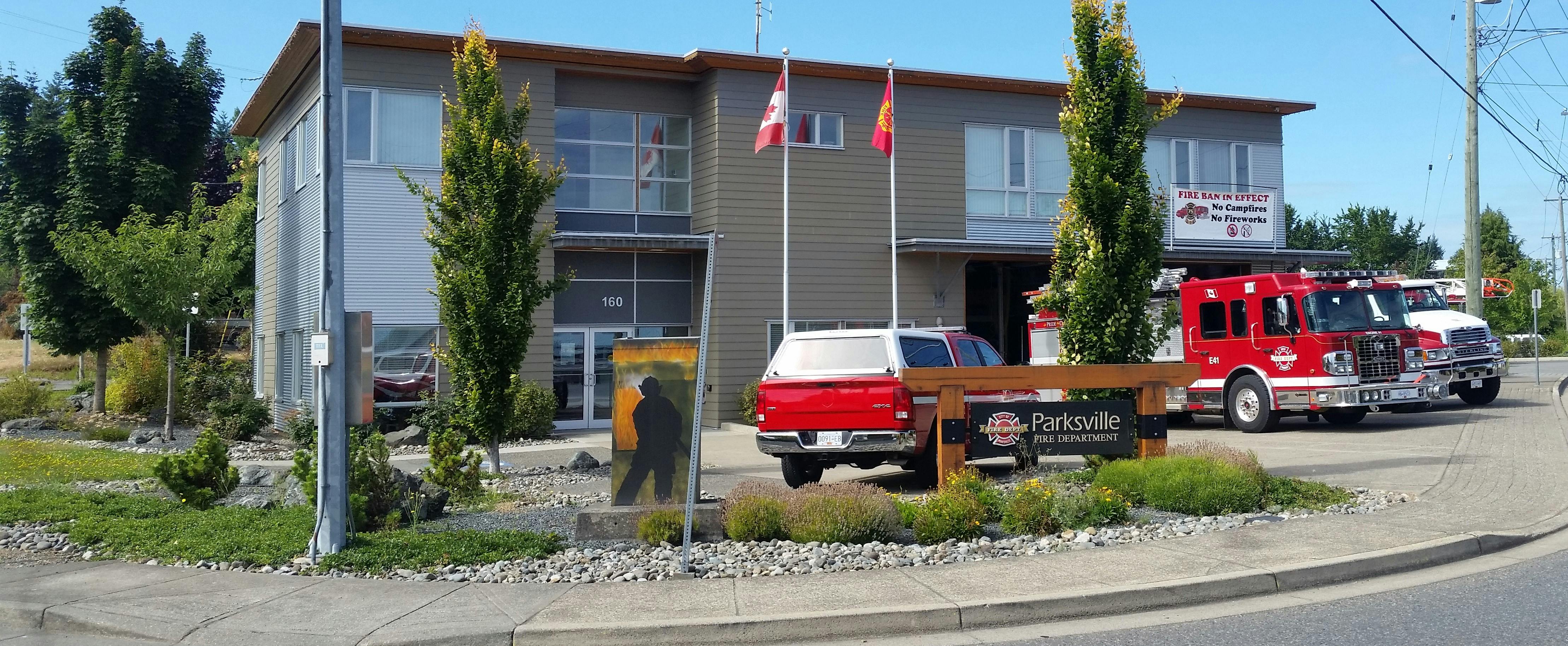Parksville's Asset Management
The City is grateful for the $108,000 in funding from the Canada Community-Building Fund Community
Works Fund to support the City’s asset management project.
Asset management is the process of making decisions about the use and care of infrastructure to deliver services in a way that considers current and future needs, manages risks and opportunities, and makes the best use of resources.
The City of Parksville manages and maintains a wide variety of assets including:
- Over 20 buildings
- Over 40 vehicles
- Over 120 kilometres of watermains
- Over 90 kilometres of storm mains
- Over 80 kilometres of sewer mains
- ~100 kilometres of roads
- ~85 hectares of parkland and associated trails networks, structures, and playgrounds
- Water treatment plant, reservoirs, and pump stations
- Equipment for servicing vehicles, grounds and parks maintenance, emergency services, IT infrastructure and much more.
The City is dedicated to managing these assets in a sustainable way so current and future citizens can enjoy the same levels of service which are offered by the City today. Sound asset management practices help minimize risks and long-term costs.
This video from the Federation of Canadian Municipalities explains how asset management and sustainability can help communities.
Local governments are responsible for maintaining an enormous quantity and variety of assets, ranging from major infrastructure such as hundreds of kilometres of roads and utilities, to items as small as the computers and telephones used by the City to provide service to the community.
As infrastructure ages, maintenance becomes an ever-increasing challenge. And just like with your car or your home, if not properly maintained these assets may fail much earlier than expected.
The goal of asset management is achieving “sustainable service delivery” - ensuring current community services are delivered in a socially, economically, and environmentally responsible manner which does not compromise the ability of future generations to meet their own needs.
What We Accomplished in 2023
Condition assessments and valuations of non-linear infrastructure.
- To support renewal and maintenance timelines and costs.
Development of new asset registries for key asset classes.
- To consolidate asset information in one place.
Draft copy of a sanitary sewer asset management plan.
- To be finalized in 2024 once the sanitary sewer master plan is complete.
Certification of six staff in the asset management planning certification program by NAMS Canada.
- To develop organizational asset management awareness.
Development and Council approval of an asset management strategy.
- To define what the City will do with respect to asset management and how it will be done.
Update of the City’s asset management policy.
Review and update of the linear asset cost estimating database.
- To assist with renewal estimates and infrastructure funding requirements.
Development of a draft asset risk management document.
- To help prioritize asset renewals based perceived risk associated with each asset.
Multi-department review of levels of service and risk for the sanitary sewer system.
- What do we do and how often do we do it.
Commencement of the sanitary sewer and drainage CCTV video inspections.
- To support condition and risk assessment of drainage and sewer lines.
Substantial work on drainage, transportation, water, and sewer master plans.
- To assist with capacity analysis and infrastructure renewal and addition priorities.
Completion of a pavement condition assessment.
- Supports condition and risk assessment of our roads.
Moss Road infrastructure renewal.
- To replace aging infrastructure to limit the risk of failures in the system.







